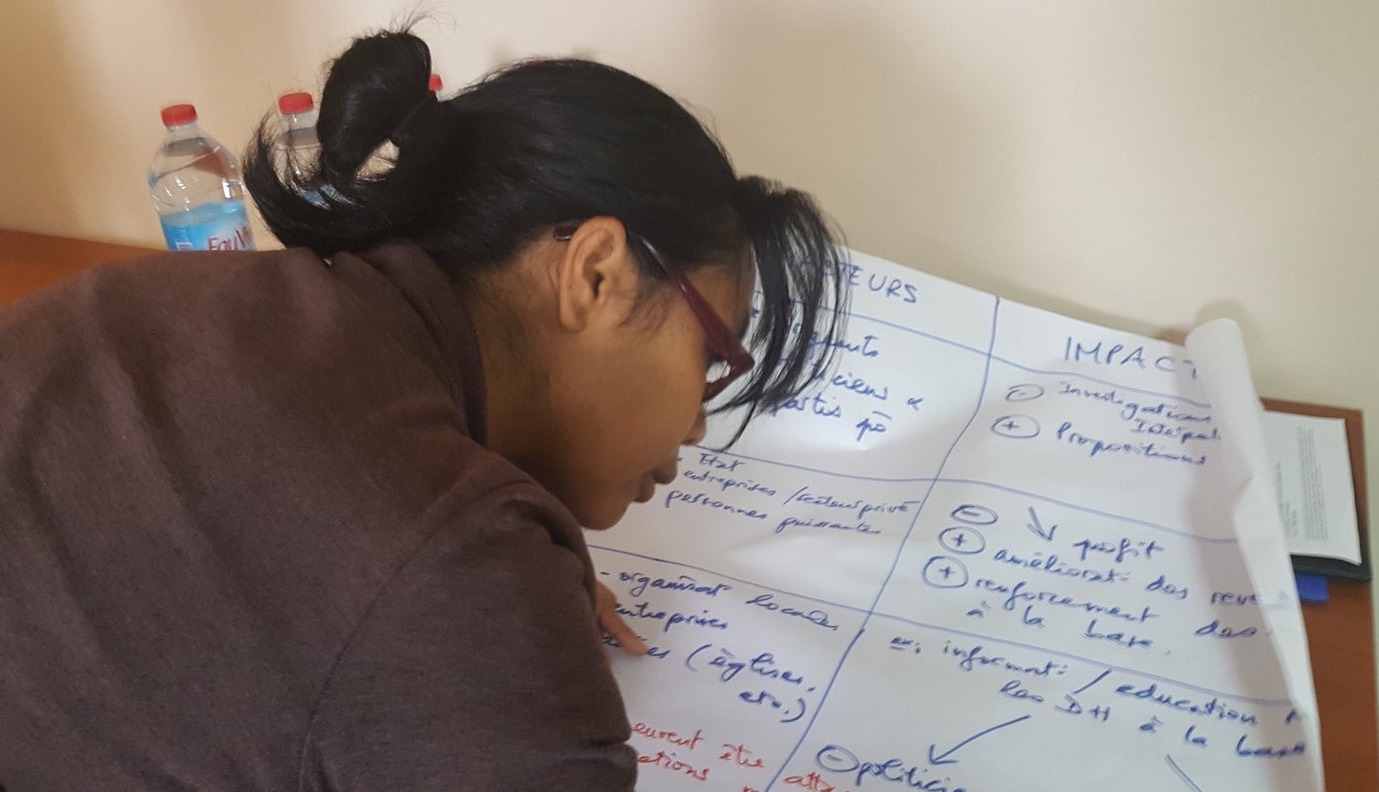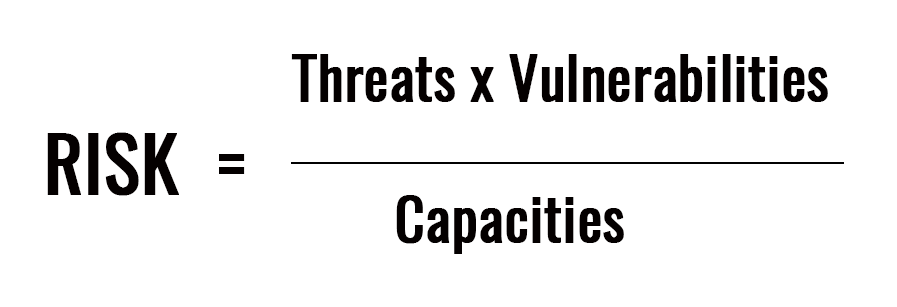|
OBJECTIVE |
To understand and use the Risk Formula as a tool in assessing a specific security risk |
|
TIMING |
90 minutes |
|
TIME BREAKDOWN |
Introduction - 10 minutes Experience of HRD - 5 minutes Exercise/discussion - 40 minutes Individual work - 15 minutes Feedback & Closing remarks - 20 minutes |
| MATERIALS NEEDED | |
|
HANDOUT |
Formula and Definitions |
|
PREPARATION |
Discuss with a participant sharing their experience of a situation where they faced risk and overcame it, to be used as a case study Prepared flip charts |
When planning and facilitating this session, it is important to consistently apply an intersectional lens to each participant's identity and experiences, and their protection needs. Overlapping systems of discrimination and privilege, such as gender, sexual orientation, religion, disability, racial and/or ethnic origin, economic status/class, marital status, citizenship, age and physical appearance, can have a profound impact on human rights defenders' and their communities' perception of and experience with risks and protection.
Introduction:
- What you do as an HRD can be challenging and have a negative impact on specific authorities', groups' and individuals' interests, and this can put you at great risk
- Risk is an inherent part of defenders' lives in certain countries and lowering the risk means we can continue the work more safely
- Risk analysis is at the heart of this workshop, so this session is very important
- We analysis risk for ourselves personally, and also in our organisations. There is a big overlap between them, so it isn’t a problem to cover one risk and threat, eg arrest, in both plans. By covering the risk and threat in both ways you will gain useful insights by looking through different lenses
 Brainstorm – what risks and threats do you face?
Brainstorm – what risks and threats do you face?
- Write up on flip chart or participants write on sticky notes for the flip chart
- Group the risks according to physical, digital and psycho-social, and sub-divide if this makes sense, eg detention/arrest together, online defamation and stigmatisation together
Note: together with the registration forms of participants and the introduction, this session helps the facilitators understand the most important risks and threats to the participants. However the facilitator should also be sensitive to participants who may not wish to be open about some risks, eg WHRD and LGBTIQ+ HRDs and not pressure anyone to share.
The trainer introduces risk formula and emphasises:
- The risk level may be low, medium or highlights
- Threats are “external” relating to your context and opponents, while vulnerabilities are “internal” related to your identity, location, work choices and behaviour

Definitions:
RISK – the possibility of events that result in harm (eg the possibility will be low, medium or high1)
THREAT – declaration or indication of an intention to inflict damage, punish or hurt (these are “external”, such as the political and legal situation, as well as groups or individuals issuing general or specific threats)
CAPACITY – any resource (including abilities and contacts) which improve protection
VULNERABILITY– any factor which makes it more likely for harm to materialise or result in greater damage (these are “internal”, relating to aspects including your identity, location, work and behaviour)
Note: resist calls to discuss the definitions initially. Instead explain you will first learn by considering an example and identifying the elements, then later you can return to questions about definitions if anything is unclear.
Best practice is to use experiences of participants rather than case studies.
Note: Best practice is to use experiences of participants and cases they have heard about, rather than case studies. If you must have a pre-prepared case study, see page 11 of the Security Workbook.
In circumstances where the participants don’t have much experience of risks, you could prepare case studies based on examples in the country, and ensuring you include intersectionality elements, eg relating to gender, race, ethnic origin and other attributes which have traditionally been discriminated against. Keep case studies short and relevant, and do not include extraneous details.
Check in advance with a participant who is willing to share an example of when they faced a risk which was overcome.
Explain to them that you would like to discuss this in order to understand risk analysis using a real life case. Ask the participants to relate the threat/s, their vulnerabilities and capacities, but avoiding that terminology, so the participants have to consider the options.
The participant should relate the experience (5 minutes), and the others should consider:
- What were the threats?
- What were the vulnerabilities?
- Where any of the vulnerabilities related to intersectionality?
- What were the capacities?
- What level was the risk?
Note: emphasise to the participants that this is only an example to be used to illustrate the risk formula, and they should not criticise the actions the HRD took.
Note: It is good to write this up on a landscape (long side horizontal) flip chart sheet, with the examples from the participant’s experience under the key words.
Ask:
- Pick out different elements from the threats, vulnerabilities and capacities, and ask “if this wasn’t there, would that make the risk higher or lower?”
Check now if the definitions make sense.
It is difficult (although sometimes possible) to reduce the threats we face, but this normally requires long term advocacy efforts. We do have under our control what capacities we have and the ability to identify our own vulnerabilities. Our challenge is to reduce our vulnerabilities and increase our capacities, and in that way we can most easily reduce the risk.
Why is the risk formula a useful tool?
- Versatile and flexible with no cultural bias
- Can be used in any situation (except emergencies, when action is best!)
- Can be used to predict what capacities will be required in the future
Exercise:
Now ask the participants to turn to individually fill in this chart for up to 3 risks/threats each
| Risks | vulnerabilities | capacities existing |
capaities required |
|---|---|---|---|
| Risk 1 | |||
| Risk 2 | |||
| Risk 3 |
Feedback and discussion
- Ask participants what was particularly difficult, and discuss how to deal with the challenges
- Ask participants for examples of the capacities they identified they need to get
Conclusion:
Although risk is common in the lives of defenders, many variables – the capacities and vulnerabilities – can be improved by our own actions
1 In the Front Line Defenders Security Workbook 2011 edition, risks are described slightly differently. Use of either definition will be useful. The definition in this Manual reflects more mainstream methodology.
Related modules:
The Risk Matrix, Discussing Threats with Rural communities, and Threat Assessment
Note: Depending on your group, you may focus more on personal or organisation/network/community protection. Nevertheless it is always wise to include both. Each module uses a different tool – the risk formula and the risk matrix. Actually you can use either tool for personal or organisation security. However the formula relates better to personal because of the ‘vulnerability’ aspect, which enables HRDs to consider their uniquely personal vulnerabilities. The matrix works better for organisations/networks/communities as it is easier to describe the Probability and Impact Levels, and as a result create Standard Operating Procedures (SOPs) to reduce Probability and Impact as a group.
However, when considering protection for a group of people, it must always be emphasised that the impact will be different for different defenders depending on their intersectionality (eg a Black Trans defender may be more at risk than a white gay defender, or the work they do; eg Rural Outreach Worker versus capital-based finance officer).
